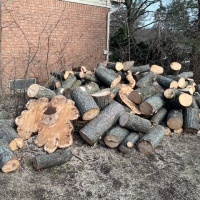Silk comes from the cocoons of the silkworm, the caterpillar (larva) stage of a moth.
Moths emerge from cocoons, mate, lay eggs, and die in five days. Females lay 200 to 500 tiny eggs. The larvae hatch in 10 days and eat mulberry leaves continuously for 4 to 6 weeks till they are almost three-inch-long caterpillars. When grown the caterpillar takes 3 days to spin a silk cocoon which covers a brown hard-shelled pupa.
Metamorphosis from caterpillar to moth takes three weeks. Then a wet spot appears at the end of the cocoon. This is from the enzyme cocoonase that the moth secretes from its head to dissolve silk so the moth can escape the cocoon. This cuts the continuous thread of the cocoon.
Harvesting of silk is done by boiling cocoons in water about one week after spinning them well before the silkmoths emerge. This kills the moth to prevent its hatching and destroying the silk with cocoonase. The boiling also helps uncoil the silk thread.
Sometimes the largest and finest cocoons are allowed to hatch for breeding purposes. Hatched cocoons produce many short silk threads which produce lesser grade silk fabrics than the long thread from an unhatched cocoon.
The cocoon is formed with a single continuous silk thread made from a protein secreted by two salivary glands in the silkworm’s head. The thread is 1,500 to 3,600 feet long.
To make a pound of silk, 2,000 to 3,000 cocoons are needed. This is about 1,000 miles of thread. Seventy million pounds of silk are produced each year requiring 70 billion miles of silk thread. This distance is over 300 round trips to the sun. Ten billion pounds of mulberry leaves are needed to feed the silkworms for this annual silk production.
Silkworm is a common food in the orient. Boiled silkworms from cocoons are seasoned to make a popular snack in Korea. Chinese street vendors sell roasted silkworm pupae. It has even been suggested that astronauts raise silkworms for food on long missions.
Read the prequels in this series on Monarch Butterflies and their significance for the creation/evolution controversy:
1. Insect GPS
2. Monarch Butterflies
3. Caterpillar or Butterfly—Which Was First?
4. Monarch Caterpillars
5. Morphing Monarchs
6. Changing Chrysalis
7. Emerging Monarchs
8. Butterfly vs. Caterpillar
9. Migrating Monarchs
10. Navigating Monarchs
11. Monarchs on Noah’s Ark?
12. Monarch or Viceroy?
13. Butterfly Evolution?
14. Butterfly or Moth?
15. Mexican Jumping Beans
16. Silk
Read the sequel:
18. Woolly Bear Caterpillars
Soli Deo Gloria.
Subscribe – Don’t miss future blog posts!
Click the sidebar’s “SUBSCRIBE” button to follow the
Bible-Science Guy Blog. You’ll automatically receive
new posts free by email. Click SUBSCRIBE NOW!
©William T. Pelletier, Ph.D.
“contending earnestly for the faith”
“destroying speculations against the knowledge of God”
(Jude 1:3; 2 Cor 10:4)
Monday March 1, 2010 A.D.
And Yahweh made the beasts of the earth after their kind, and the cattle after their kind, and everything that creeps on the ground after its kind; and Yahweh saw that it was good. (Genesis 1:25)
Disclaimer: BibleScienceGuy has no control over any advertising that may appear and receives no payment or consideration for it. Ads & “Related” links come from WordPress, not from BibleScienceGuy.































Very neat blog post. Thanks Again. Really Great.
LikeLike
By: Yong Sehorn on July 7, 2015
at 4:06 pm